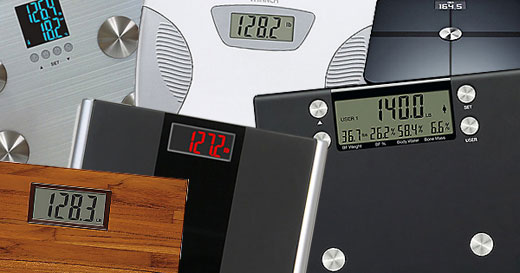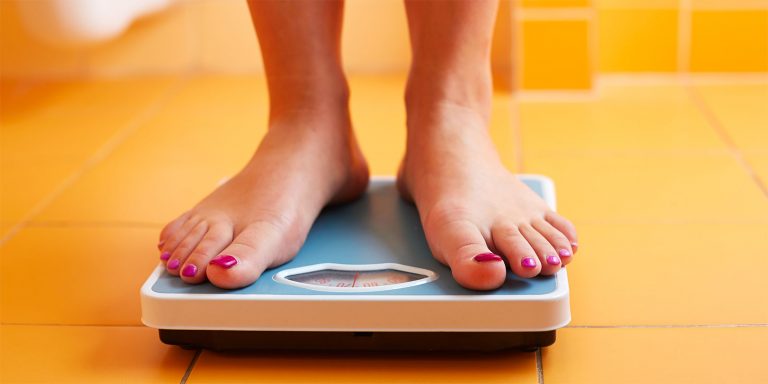Scale packages almost always have a picture of the scale displaying a seemingly random weight — until you look at the weights on 40 different boxes and start seeing patterns.
I came up with this idea after my wife and I moved and were meticulously walking up and down every single aisle at Bed, Bath and Beyond looking for stuff we absolutely needed for our new house. (The phrase, “I have *so many* 20 percent off coupons and they don’t care about the expiration dates” came up verbatim more than once.)
As we walked down the bathroom scale aisle, I noticed the packages of two different brands of scales displayed the exact same weight in their sample pictures. “Hmm,” I wondered, “I wonder how companies decide what weight to show on their scales.”

It seems like a hell of a plate spinning gambit…
(1) Make sure the weight is aspirational for your target customer.
(2) But not SO aspirational that it seems impossible to achieve.
(3) But still low enough that people under that weight don’t reject your scale.
(4) But not so low that it looks like you’re promoting an unhealthy lifestyle.
(5) But make sure to circle back around and set a weight that’s aspirational for your target customer.
With all of that at play, I imagine companies have quite a few meetings centered around the perfect weight to display on their scale boxes. It’s a whole different genre of obsessing over the number on the scale.
There are currently 60 bathroom scales on sale at BedBathandBeyond.com. Of that group, the sample pictures of 16 either don’t display a weight or display 0.0, so I eliminated them. Four of the remaining 44 display the weight in kilograms, so I converted those.
Here are the 44 weights on display (an asterisk denotes a conversion from kilograms):
| 119.7* | 119.7* | 124.1 | 124.3 | 124.3 | 124.3 | 124.3 | 124.8 | 126.2 | 126.2 | 126.2 | |
| 126.4 | 126.4 | 127.2 | 127.2 | 127.2 | 127.2 | 127.2 | 127.2 | 127.2 | 127.2 | 127.2 | |
| 127.2 | 127.2 | 127.2 | 128.2 | 128.3 | 128.3 | 137.6 | 137.6 | 137.6 | 137.6 | 137.6 | |
| 137.6 | 137.6 | 140 | 140 | 140.1 | 155 | 164.5 | 164.5 | 165 | 165.1* | 197.5* |
Conclusions:
Average weight: 134.6
Median: 127.2
Mode: 127.2 (displayed on 28 percent of the scales, although all by the same brand, Homedics)
Vice mode: 137.6 (displayed on 16 percent of the scales, although all by the same brand, Beurer)
Standard deviation: 15.5 lbs (that 197.5 scale is four standard deviations from the mean, the outlier equivalent of a seven-foot man)
Adjusted average with duplicates removed: 140.0 (here I removed duplicates from different scales by the same brand)
Adjusted average with the 197.5 removed: 133.2
—
Thing that makes you go hmmm #1
The two lightest and two heaviest weights displayed are converted from kilograms. It seems displaying a weight in the 110s is taboo, but the “54.3 kilos” bomb is totally kosher. Also, a manufacturer called Escali only has one scale on sale — the one that shows 197.5 lbs. (89.6 kilos).
Thing that makes you go hmmm #2
The scales that display weights in the 160s are all fancy Bluetooth/wifi/gadget scales and, perhaps, are therefore subtly and obnoxiously targeted at men.
Thing that makes you go hmmm #3
Just four of the scales display an integer for a weight; the other 40 all include a fraction of a pound. Don’t know if that’s for the aesthetic or if there’s some psychological trick at play.
Thing that makes you go hmmm #4
Only seven of the scales display body fat percentages in their sample pictures, despite that being an exponentially more valuable metric. The body fat samples range from 16.3 to 26.8. Body fat numbers are clearly too boring to sell scales.
